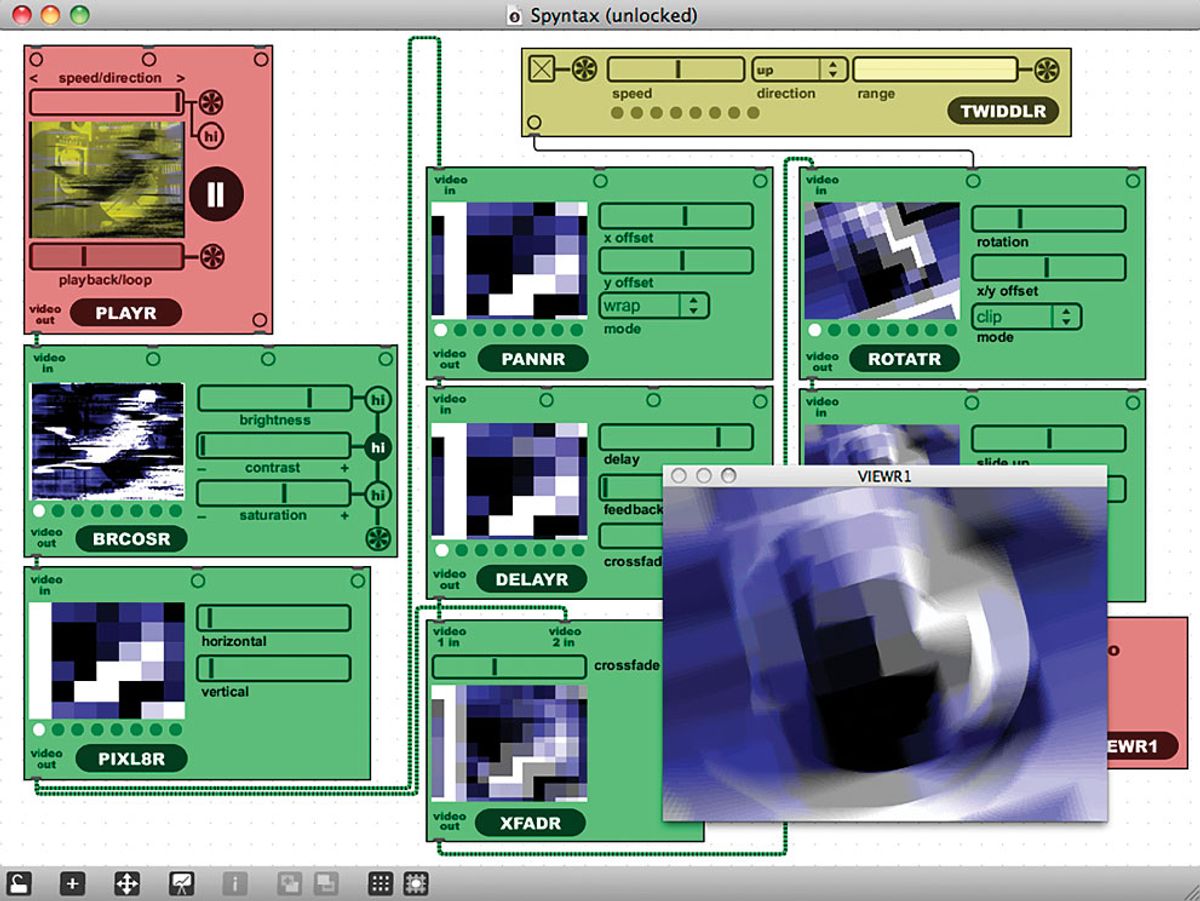Edited by Scott Wilson, David Cottle, and Nick Collins; MIT Press, 2011; 680 pp.; US $45; ISBN 978-0-262-23269-2
The 18th century's greatest hacker, Johann Sebastian Bach, composed much of his algorithmically inspired music on the sonic geek's gadget of choice: the adjustable and reconfigurable pipe organ. The gadget of choice for today's musical hackers is the personal computer.
"Bach would be all over this," says David Cottle, associate professor at the University of Utah's School of Music. "A computer is powerful and accurate and ignorant. It'll take your directions as you wouldn't have expected—which might be interesting and fun."
Unlike the pipe organ, the computer needs software in the form of a programming environment. As it happens, one of the two leading musical programming languages, Max, has recently been retooled, while the other, SuperCollider, finally has its own definitive programmer's manual.
Cottle brags that a musical algorithm can manipulate composers' entire canons or styles of music.
"What SuperCollider allows a composer to do is pursue a progressive ethic of asking the question first, then discovering the outcome," he says. "For example, you might create a virtual composer from scratch, entering into a database the probabilities from existing digitized scores of current avant-garde composers. Generating new music based on those probabilities could result in the next step in music evolution. I don't know, but that's the whole point: You can ask that question and SuperCollider will take you there."
Cottle is one of three coeditors of a new edition of The SuperCollider Book— a manual for the free and open-source SuperCollider language. It details such procedures as collating input from a computer mouse, tablet devices, and video-game controllers like Nintendo's WiiMote. It also devotes chapters to artificial intelligence applications like the smart sensing of real-time musical cues that enable an algorithm to "improvise."
But musicians had better be ready to geek up. Halfway into Chapter 1 ("Beginner's Tutorial"), the 680-page book is already nesting commands to generate 12-tone matrices with coding samples that look like outtakes from a C++ manual.
By contrast, Max 6 offers a stable, intuitive, and graphical interface through which a user can quickly set up and start doing interesting things. (If that sounds like Mac versus Linux, it sort of is—Max is available for Windows and the Mac, while SuperCollider runs on those two operating systems and Linux as well.)
Composers and recording artists (including Björk and Radiohead), nonprofessional musicians, and an estimated 1800 universities around the world use Max, says David Zicarelli, CEO of Max's publisher, Cycling '74. Version 6, which launched in November, is built around a virtual canvas on which boxes containing pieces of code (sound generators, effects, video, algorithms) are connected onscreen by patch cords. If you can plug your Gibson into a wah-wah pedal, you can program in Max. But once you do, musical ideas can become connected to anything else that has a digital form.
Curtis Roads, professor of music at the University of California, Santa Barbara, has worked with a group at his university's AlloSphere new media collaborative to use Max to translate MRI brain images into music.
"You can send off agents into a brain generated from real data," Roads says. "These agents come back and sing a song that tells you what the rate of blood flow in that part of the brain is." The resulting sounds can be both interesting compositions and also useful for neurologists seeking subtleties in enormous and complex data sets.
"It's like looking at a beautiful clockwork mechanism," Roads says. "It's so beautifully designed with all these interacting components. There's a fascination of looking at algorithms—and listening to algorithms."
This article originally appeared in print as "Sing a Song of Code."


